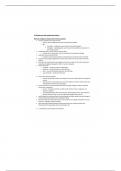Class notes
Biol 105 Neurons, Glia, and Nervous Systems Notes
- Course
- Bio 105
- Institution
- Queens College
This is a comprehensive and detailed note on Neurons, Glia, and Nervous Systems for Biol 105. *Essential Study Material!! *For you, at a price that's worth it!!
[Show more]



